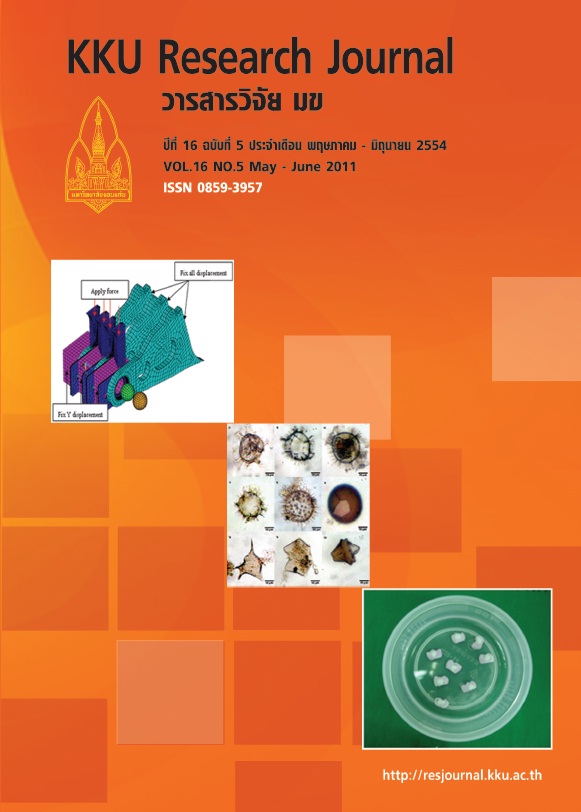The presence of carbendazim in agricultural products and its removal using photocatalysis
Main Article Content
Abstract
This study was to investigate the presence of carbendazim in three agricultural products, i.e. chive, celery and Chinese chive, and also in the toxicant-free vegetables with “Q” symbol from the Department of Agriculture. Then the removed of carbendazim was studied using photocatalysis by which 0.05, 0.1, 0.5 and 1 g/l of Degussa P-25 TiO2 was used as catalyst. Hydrogen peroxide (H2O2) in a concentration of 40, 80 or 120 mM was also added into the TiO2 suspension and the reaction was activated by UVA at the radiation intensity of 4.04±0.10 mW/cm2 . Each agricultural product was immersed in a reactor for 5, 15, 30, 45 and and 60 minutes, respectively. The results showed that all agricultural products, including the toxicant-free vegetable which had “Q” symbol had carbendazim in concentrations higher than the maximum residue limits. In order to completely remove carbendazim, 0.05-1 g/l TiO2 and 80-120 mM H2O2 were needed. When using 120 mM H2O2 and 0.05 g/l TiO2, carbendazim was entirely removed within 30 minutes but the time could be reduced to 5-15 minutes when 0.1-1 g/l TiO2 was used instead. For 80 mM H2O2 and 0.5- 1 g/l TiO2, absolute removal also happened, but it needed 15-30 minutes or longer for immersion.
Article Details
How to Cite
Narkjuetong, P., Jaisue, S., Ngamsakpasert, C., & Chuaybamroong, P. (2017). The presence of carbendazim in agricultural products and its removal using photocatalysis. Asia-Pacific Journal of Science and Technology, 16(5), 454–467. retrieved from https://so01.tci-thaijo.org/index.php/APST/article/view/83380
Section
Research Articles

